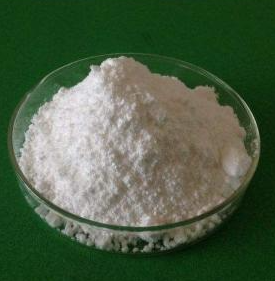| Potassium Borohydride Molecular Formula:KBH4  CAS No.:13762-51-1Features white crystalline powder or granule
Packaging sizes:25kg bag or drum |
|||||||||
| Applications Potassium Borohydride,as a water soluble reductant(milder than Sodium borohydride),mainly used in drug,pulp bleaching,recovery of noble metals and prevention of the occurrence of public nuisances caused by heavy metals.It is reductant of carbonyl compound(aldehyde,ketone,acid,acid amide,acid anhydride,acid halogen, ester,enol ester,imide,lactone),carbonitriding chemicals(azide,diazo salts,hydrazone,imine,nitrile,oxime,nitro compound),peroxide and hydroperoxide;It also can be used to remove color,smell of organic chemicals,used to control pollution and recycle noble metals,the production of drug and fine chemicals,or used in the production and recovery of catalyst.Potassium borohydride (KBH4) is a versatile reducing agent commonly used in various applications, including as a reducing agent for aldehydes, ketones, and acid chlorides. Here is a detailed explanation of its use in different reactions for the mentioned applications:
RCHO/R2C=O + 4 KBH4 → RCH2OH/R2CHOH + 4 KBO2 + B2H6
RCCl=O + 4 KBH4 → RCH2OH + 4 KCl + B2H6
In summary, potassium borohydride serves as an effective reducing agent for various applications. It is commonly used to reduce aldehydes, ketones, and acid chlorides to alcohols, as well as for the reduction of metal ions in analytical chemistry. Additionally, it finds utility in the pesticide and paper industries for its reducing properties and is employed in the treatment of mercury-containing wastewater. The specific reactions and mechanisms may vary depending on the application and the target compounds or ions involved. |
|||||||||
| Storage Avoid breakage and moisture,far away from heat,fire and inflammable matter,no mix with acid,oxidant and substance containing water.Kept in cool,dry and ventilating place. |
Frequently Asked Questions
Q: Spill emergency treatment?
A: Isolate the leaking contaminated area, set up warning signs around the scene, and cut off the fire source. It is recommended that emergency personnel wear gas masks and chemical protective clothing. Do not touch the leaked substance directly, and it is forbidden to spray water directly on the leaked substance, do not let water enter the packaging container. Collect it with a clean shovel in a dry and clean container with a cover, move it to a large amount of water, and carefully add a dilute solution of acetic acid or acetone to it, let it stand for neutralization, and then discard it. If a large amount of leakage occurs, collect it in an airtight container and mark it for disposal.
Q: Protective measures?
Respiratory protection: Workers should wear dust masks. It is recommended to wear self-contained breathing apparatus when necessary.
Eye Protection: Wear chemical safety goggles.
Body Protection: Wear appropriate protective clothing.
Hand Protection: Wear protective gloves.
Others: Smoking is strictly prohibited in the workplace. Conduct pre-employment and periodic medical examinations.
Q: Emergency measures?
Skin contact: Take off contaminated clothing, rinse thoroughly with running water immediately.
Eye contact: Immediately lift the eyelids and rinse with running water or saline for at least 15 minutes. Seek medical attention.
Inhalation: Get away from the scene to fresh air. Keep airway open. Give artificial respiration if necessary. Seek medical attention.
Ingestion: If swallowed by mistake, rinse mouth immediately and drink milk or egg white. Seek medical attention.
